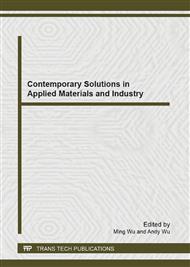p.488
p.495
p.501
p.505
p.509
p.515
p.521
p.526
p.534
The Simulation of Retinal Inner Plexiform Layer Based on Parallel Algorithm
Abstract:
The final objective of retinal simulation is to construct an artificial computer retina to replace the biological retina, and to offset the vision-impaired people. Due to the complexity of the retinal structure and the great number of bipolar cells and ganglion cells in retinal (exceeding tens of millions), both the speed and accuracy of the simulation of the retinal up to date are at a low level. In this paper we present a method for the simulation of inner plexiform layer of retina based on Compute Unified Device Architecture (CUDA) parallel algorithm to achieve the maximum utilization of CPU and Graphic Processing Unit(GPU), and to improve the speed and accuracy of the retina simulation.
Info:
Periodical:
Pages:
509-514
Citation:
Online since:
April 2013
Authors:
Price:
Сopyright:
© 2013 Trans Tech Publications Ltd. All Rights Reserved
Share:
Citation:


